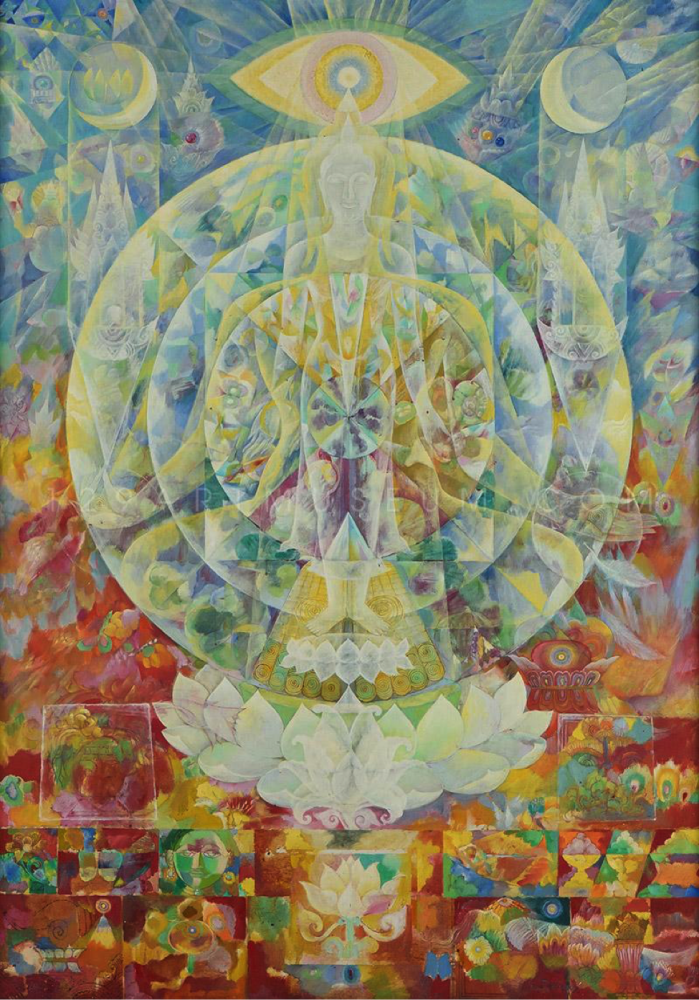Five Modern Classics of Thai Art

Official historiography credits professor Silpa Bhirsari with laying the foundations of Modern Thai art. Born in Italy under the name Corrado Feroci he arrived in Thailand in 1923 to teach sculpture at the Fine Arts Department of the Ministry of Palace Affairs. A decade later he found what was later to become the country’s most esteemed university for fine arts.
Official historiography credits professor Silpa Bhirsari with laying the foundations of Modern Thai art. Born in Italy under the name Corrado Feroci he arrived in Thailand in 1923 to teach sculpture at the Fine Arts Department of the Ministry of Palace Affairs. A decade later he found what was later to become the country’s most esteemed university for fine arts. Aside from new painting techniques and materials the Western presence in the country brought a new understanding about the arts. For example before the Modern age art was seen as something in service of the people and not an act of self-expression therefore artists were not often credited for their work. In a way what mattered was the social purpose of the work, not its artistic merits and where it came from. Below are some of the most iconic paintings by artists who left a profound mark in the history of Thai art.
“Ekaho Onsen” by Chitr Buabusaya
Because the intensive cultural exchange between East and West started around the time when Impressionism was all the rage in Europe in many Asian countries the first Modern paintings are in this style. Chitr Buabusaya is considered to be the pioneer of French Impressionism in Thailand. He started as arts and crafts instructor but later when he went to study painting and sculpture in Japan he discovered Impressionism and fell in love with it. His paintings often show picturesque views of Japan’s nature and life.
“Athens, Greece” by Vira Jothaprasert
Watercolours were also particularly popular in all Southeast Asian countries including Thailand. There are two main reasons for that - because materials for them were easy to find and because watercolours made for fluid and lucid landscapes which were very popular with foreign tourists. Vira Jothaprasert’s works on this medium are highly praised in Thai art circles and among collectors.
“Untitled” by Prayat Pongdam
In the art of print-making Prayat’s body of work is particularly representative. His works showing the life of country people with elements of Thai folk culture are so highly valued that in 1996 he was commissioned to paint the illustrations to “Mahajanaka”, Symbols of Drahma, a story written by His Majesty King Bhumibol Adulyadej.
“Ancient Field” by Manit Phoo-aree
Thai artistic tradition has its origins in Hindu modes of expression and as a result tends to be very vibrant and colourful. In this context the popularity of the somewhat quiet and clean monochromatic art of Manit Phoo-aree is worth mentioning. Inspired by traditional mural paintings he often depicts scenes and vignettes of the life of common people blending them with a lyricism that echos impressionistic influence.
“The Miracle” by Pichai Nirand
Ever since the first contact of Thai artists with Western artistic tradition the general flow of development is towards mixing the traditional and the foreign. In that sense Pichai Nirand’s art opens a new page in the history of Modern Thai art. He integrates themes of Buddhist art with Western styles and techniques continuing a tradition that has a been a defining aspect of Modern Thai art discourse. He also received an invitation to illustrate “Mahajanaka”.

